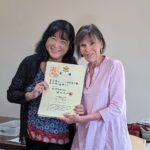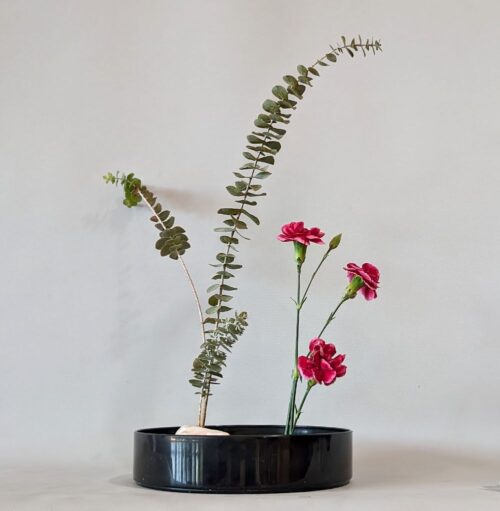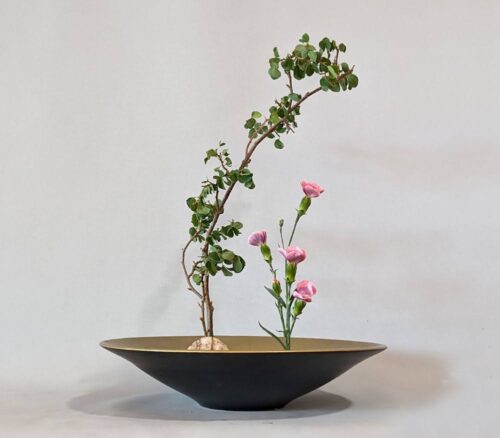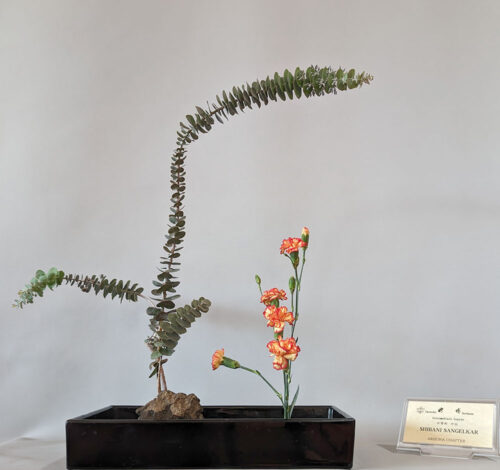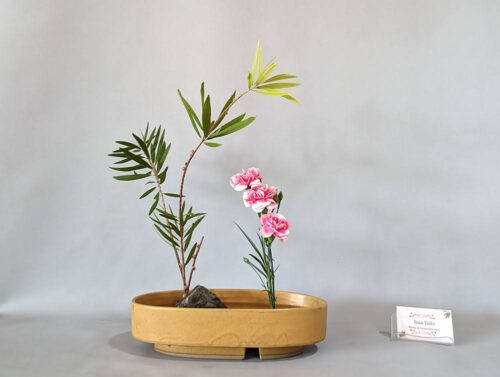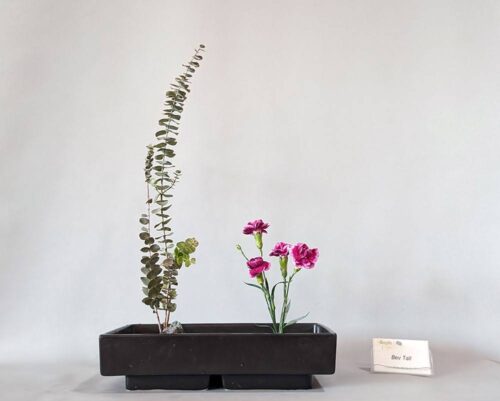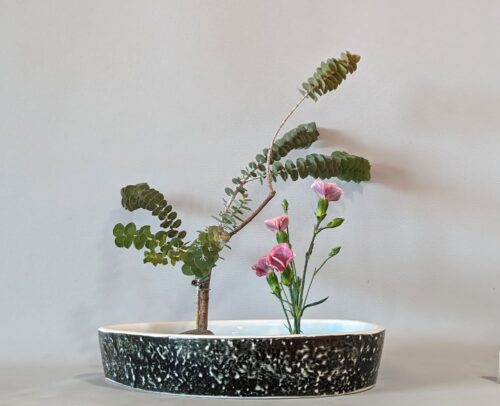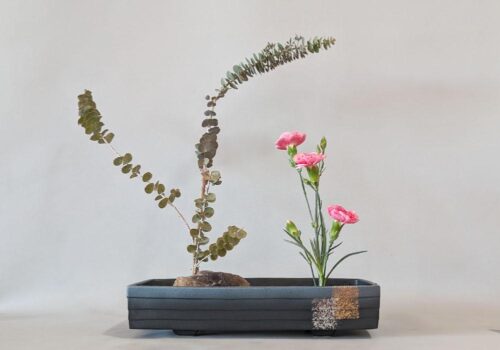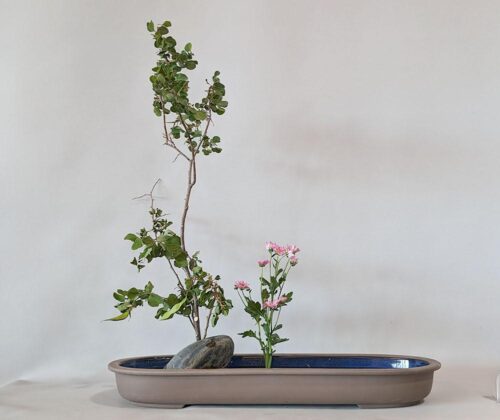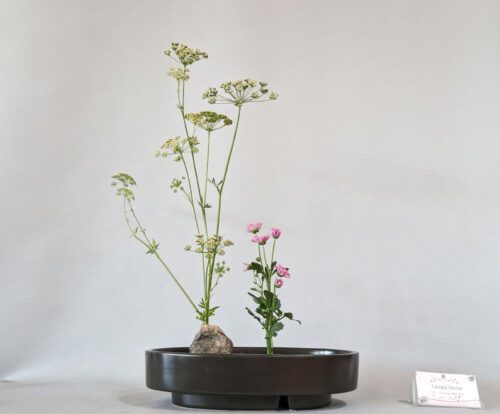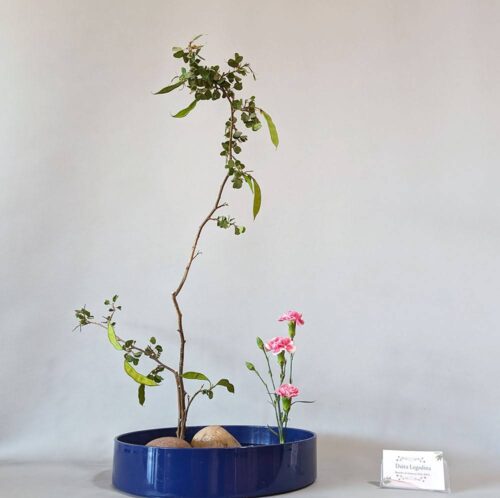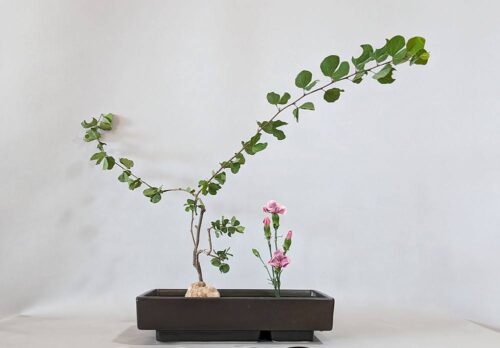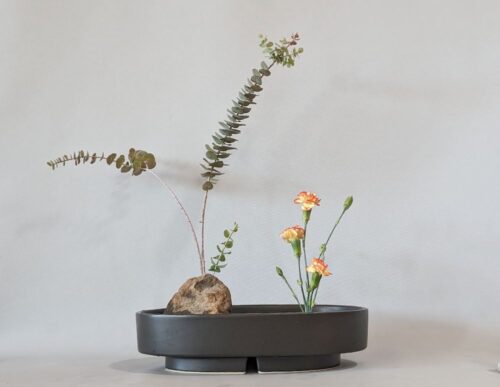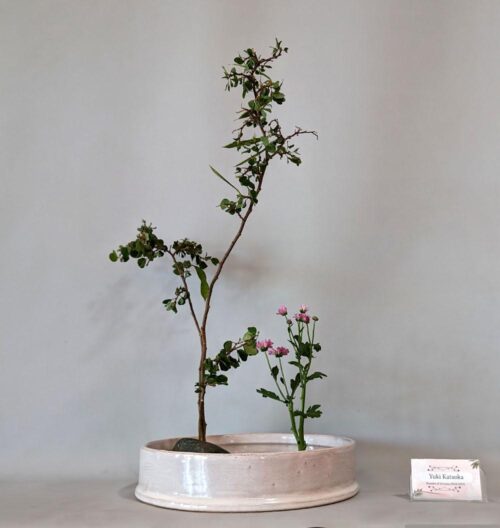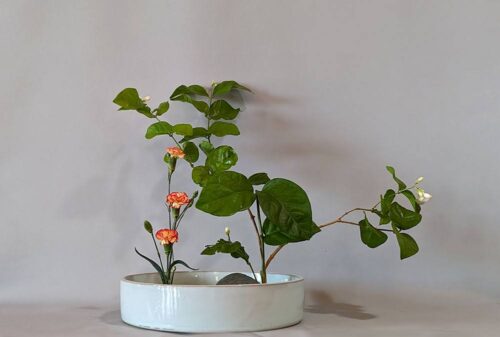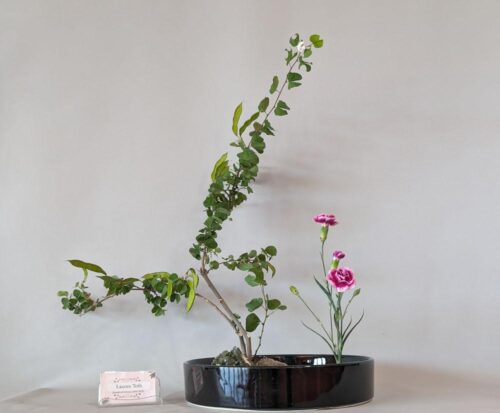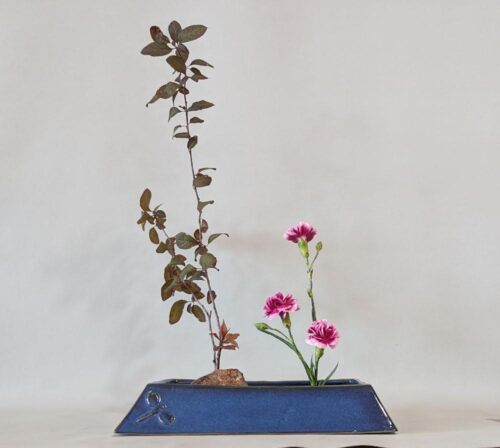May 18th, 2024 Shoka Shofutai, Futakabu-ike with Lauren Toth
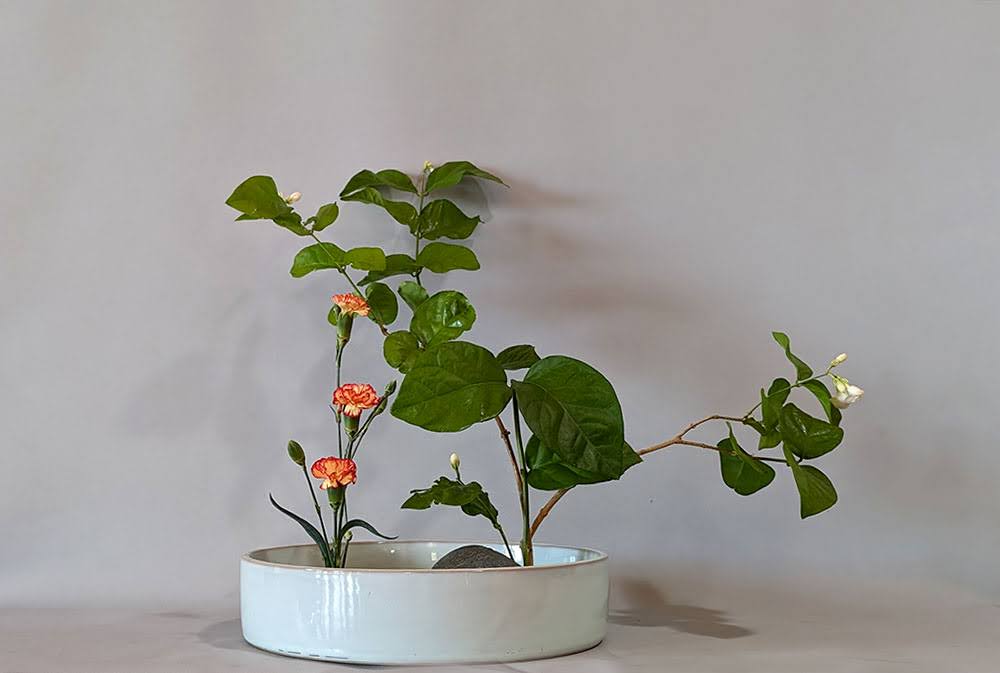
A Large and Enthusiastic Gathering
Our May workshop saw a large and enthusiastic group of participants, all eager to learn and create. The focus of this session was the futakabu-ike, a two-group arrangement traditionally presented in a low, wide basin.
Insights from Sensei Lauren Toth
Before we began our hands-on work, Sensei Lauren Toth delivered an insightful lecture on the nuances of futakabu-ike. She explained that this arrangement can be categorized into two types: gyodo-ike, which divides water plants into groups, and suiriku-ike, where land and water plants are positioned separately.
Given that land plants are more readily available in Arizona, we opted to create a suiriku-ike futakabu-ike. In this arrangement, the land group, known as shin and soe or o’kabu, is positioned toward the rear of the vase. It includes a tai-za, which suggests where the tai would be in a shoka arrangement. The water group, called me-kabu, is placed laterally and forward of the o’kabu and includes a lightly arranged stem called soe-za, positioned where the soe would normally be.
Balancing the Arrangement
To maintain balance, it’s crucial that both the tai-za and soe-za are not too heavy or large. A rock is traditionally placed in front of the o’kabu to designate the land group. The choice of stone varies with the seasons: a greenish stone in spring, black in summer, and red in autum
A Memorable Workshop
Our last workshop before the summer break was a great success, enjoyed by all attendees. The combination of Yuki Kataoka’s recognition, Sensei Toth’s enlightening lecture, and the hands-on creation of the suiriku-ike futakabu-ike made it a memorable event.
We hope you enjoy the photos from the workshop and look forward to seeing everyone again after the summer break.


